This is a device which allow Steam Condensate to pass through it, trapping the live steam.
Steam is a continuous condensing fluid. There are always heat loss through steam pipe insulation to ambient. Generation of steam is for transferring heat to process. Steam convert into condensate when releasing (latent) heat. This Condensate has to be removed as soon as it is formed, because it hinders efficient heat transfer as well as leads to water hammer phenomenon as it is Hot water (having more Sp. Gravity than steam) that moves with high velocity of steam (eight to ten times higher than water) hammering & damaging the line (corrode the steam pipe & steam tube), equipments, accessories. Accumulated condensate also steam also . So condensate to be remove as quick as possible from steam network. Purpose of using Steam trap is to remove condensate from steam line, trapping the live steam.
There are three types of steam trap mainly use now a days.
- Thermodynamic Steam Trap
- Thermostatic Steam Trap
- Balance Pressure Thermostatic Steam Trap
- Bi-metallic Thermostatic Steam Trap
- Mechanical type Steam Trap
- Ball Float type Steam Trap
- Inverted Bucket type Steam Trap
- Thermodynamic Steam Traps are mainly used for condensate draining from Main Steam Header Lines, Platen Presses.
- Thermostatic Steam Traps are mainly used for condensate draining of Tracing Steam line (Process fluid line tracing, Instrument tracing).
- Mechanical type Steam Traps are mainly used for condensate draining from Indirect Steam Heating Equipments (Heat Exchanger, Reboiler,
Jacketed Vessel, Storage Tank).
Steam is the vapor/gaseous phase of water. There are three phases of any material, Solid, Liquid & Gas. H2O, normally none as water, water is it liquid phase, solid phase is Ice & gaseous phase is Steam. When heat is introducing in water, after reaching a certain temperature, water change its phase in to steam.Similarly if heat is subtracting from steam, at a fixed temperature, steam turns back in to water.
- Generation of Electricity by moving the Turbine with the help of steam.
- In Process industries steam is used in indirect as well as direct heating application.
- Maintaining the temp of hot process fluid during transferring from one place to another by using steam tracing line.Steam tracing also used for many instruments in industries.
- Steam also being used as a coolant in Hot Oil Pumps in Chemical, Petrochemicals Industries, Petroleum Oil Refineries.
- Steam also being used in Steam Ejector.
- Steam also being used as utility and in application like Shoot Blowing media for Burners in Furnace, flushing of lines etc.
Quantity of Enthalpy/heat energy available in water or steam that can be measure/express in terms of temperature is known as Sensible Heat/Enthalpy.
What is Latent Heat in Steam?
The quantity of heat energy/Enthalpy require to change the phase of any material to its nearest phase (like liquid to gas or water to steam) at its saturation temp at given pressure is known as latent heat. Through out the process of phase change, temp of the total system remain same.
Quantity of Latent heat require (to be added) to change the phase from liquid to gas is also known as “Heat of Evaporation”.
Quantity of Latent heat to be subtract to change the phase from gas to liquid is also known as “Heat of Condensation”.
Value wise (with unit) of both heat energy are almost same for all materials at same pressure. Only process are different to each other.But in case of Steam, values are considered absolutely same for both heat energy at same pressure.
No, This is wrong. Latent heat in steam is 504 kCal/kg at 4.0 kg/cm2g pressure is the correct ans.
- Solubility of Oxygen (O2) in water is high at low temp, solubility of O2 reduce with increase in water temp & at 103 – 105OC temp almost negligible.O2 causes corrosion (by oxidizing) and weakening, leading to damage and leakage in pipes and related equipment. In Boilers it can cause serious thinning of steam tubes which can lead to accidents. O2 help to microbial growth in system. Solubility of O2 in water will decrease with Increase in water temp.
- 1% fuel saving can be achieved by increasing Boiler Feed Water temp by 6OC.
- High temp Feed Water injection in steam drum will avoid thermal shock.
When steam condense in steam network, pH of condensate lowering down because of reaction with iron. Neutral pH is 7.0, pH below 7.0 is acidic,& above 7.0 is basic. Basic & Acidic both are corrosive, but 6.5pH (acidic) is much more corrosive than 8.5pH (basic). So pH in feed water must beat 8.0 – 8.5pH or more to maintain condensate pH not less than 7.0.
Specific volume of steam at lower pressure is high, and with increase in pressure it’s specific volume decreases. If steam is generated at rated capacity but at lower pressure than design pressure, volume of steam of rated mass inside the steam drum will increase more than design volume. But steam drum volume remain fixed, so there will be a tendency of water carry over. Steam demand in steam network will fluctuate with time. During pick demand water carry over will more, which causes water hammering, leakage in line.
- Increasing Boiler Feed Water Temp by recovering steam condensate, mixing of Flash Steam & Hot Condensate with cold feed water in Feed Water Tank.
- Increasing Boiler Feed Water Temp by recovering heat from Flue Gas using Economizer.
- Increasing Boiler Feed Water Temp by mixing live steam with feed water in feed water tank / de-aerator tank.
- Increasing Boiler Feed Water Temp by recovering heat from blow down water – directly mixing Flash Steam of blow down water with feed water or indirect heating.
Latent heat energy of steam can be transfer in indirect heating application efficiently. In this case 498.9 kCal/kg heat can be transfer.Sensible heat energy in steam (heat available in condensate after phase change) can also be transfer but will at very low rate, which cause reduction of production efficiency, drop in temp profile.
Pressure Reducing Station require to be installed in steam line because of following reasons
- Latent heat available (qty of heat will release on condensation of steam) is higher at lower pressure. So at low pressure steam consumption in process is low. Steam to be used at lowest practically possible pressure depending upon maximum temp to be achieved in process.
- Specific volume of steam is higher at lower pressure & lower at higher pressure. So
- Generation of steam at high pressure require less volume of Boiler, hence less investment, less space requirement.
- Transfer of steam at high pressure from one place to another pipe size requirement is less, weight & cost of piping will be less.
- Transfer of steam at high pressure from one place to another, due to lower pipe size, support for piping & requirement piping equipments will be less.
- Transfer of steam at high pressure from one place to another, due to lower pipe size, insulation materials will be less.
- Transfer of steam at high pressure from one place to another, due to lower pipe size & outer surface area, heat loss to ambient will be less.
- Steam using in industries at different pressures. Generation of steam at different pr require different boilers are not feasible. So generating steam at higher pressure at boiler and reduce steam pressure, near the point of uses, to the needed low pressure.
Air/O2 always dissolved in water, at high temp solubility of O2 in water reduce. So if Boiler Feed Water introduced in Boiler Drum at low temperature dissolved O2 will release at evaporation. Another way of air ingress in steam network is, when boiler is in shut down or a portion of steam network is isolated for a period of time, then all the steam inside the pipe will condense and pressure inside the pipe will reduce up to below the atmosphere, air will entre into the steam pipe through pipe flange joint, leakages in pipe.Air, having low specific gravity than steam, will flow with steam through upper portion of steam pipe, will create several adverse effect like, restriction to heat transfer (air is excellent heat insulator). So air to be remove from steam network from the top portion of the network using Air Vent (automatic Vent is preferable).

 Aerated Concrete Block Industry
Aerated Concrete Block Industry  Brewery Industry
Brewery Industry  Captive Cogen Industry
Captive Cogen Industry 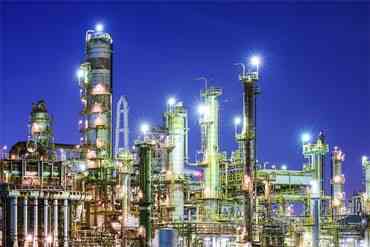 Chemical Industry
Chemical Industry  Dairy Industry
Dairy Industry 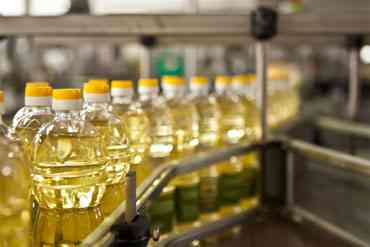 Edible Oil Industry
Edible Oil Industry 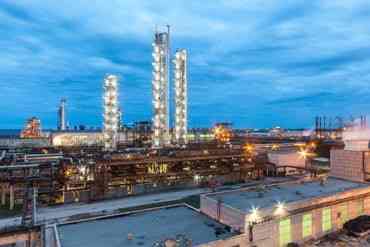 Fertilizer Industry
Fertilizer Industry  Hotel Industry
Hotel Industry 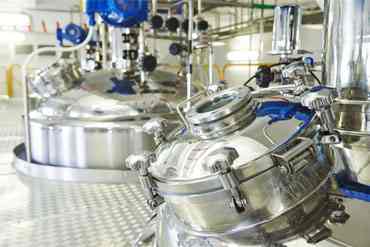 Pharma Industry
Pharma Industry 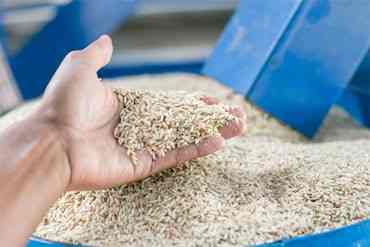 Rice Industry
Rice Industry 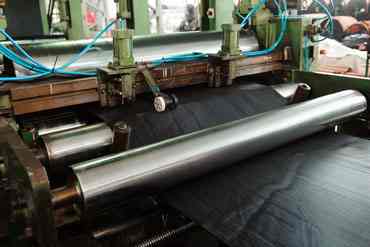 Rubber Industry
Rubber Industry  Soap Industry
Soap Industry 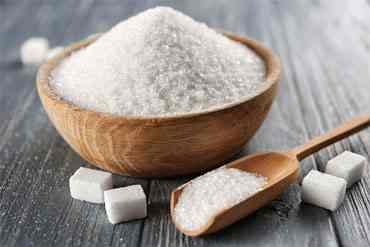 Sugar Industry
Sugar Industry  Textile Industry
Textile Industry 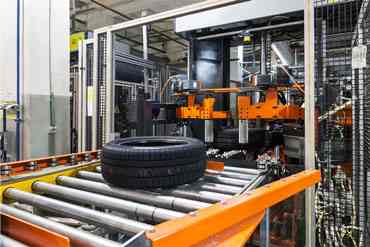 Tyre Industry
Tyre Industry